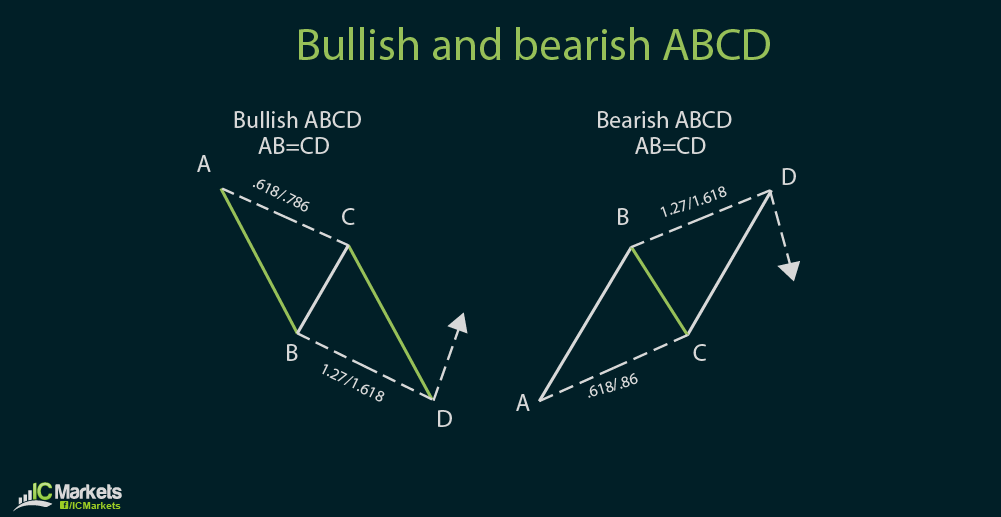Harmonic price patterns comprise another set of chart formations involving Fibonacci retracement and extension levels. The rule of thumb in trading these patterns is to wait for the entire formation to be completed before entering any long or short positions.
There are six main kinds of harmonic price patterns, namely the ABCD, the three-drive, the Gartley, the crab, the bat, and the butterfly. The last three chart pattern names are based on the animals that the chart patterns resemble. This makes it easier for traders to remember what kind of harmonic price pattern is forming.
First off, the ABCD pattern is comprised of lines AB and CD known as the legs and line BC, which is the retracement. Here are the bullish and bearish illustrations of the ABCD pattern.
For this pattern to be valid, the length of leg AB should be around the same as the length of leg CD.
Next, the three-drive pattern is similar to the ABCD pattern, except that it has three legs and not just two. This is also a variation of the basic 5-3 Elliott Wave pattern discussed in the previous section.
For this pattern to be valid, the legs of the three-drive need to be equal in length. Aside from that, the time it takes for each leg to be completed should also be equal.
In the 1930s, stock market advisor Harold McKinley Gartley applied scientific and statistical methods to come up with a set of harmonic price patterns guiding traders on what to trade and when to enter trades. The most basic among these patterns is the “222 Pattern” found on Gartley’s book entitled Profits in the Stock Market.
These 222 patterns form as corrective formations in the middle of an overall trend, telling the trader when to take a trade and take advantage of the trend continuation at a bargain price. These reversal points are marked by Fibonacci retracement and Fibonacci extension levels.
For the pattern to be valid, it should have the following characteristics:
1) Move AB should be the .618 retracement of move XA.
2) Move BC should be either .382 or .886 retracement of move AB.
3) If the retracement of move BC is .382 of move AB, then CD should be 1.272 of move BC. If move BC is .886 of move AB, then CD should extend 1.618 of move BC.
4) Move CD should be .786 retracement of move XA
The crab, bat, and butterfly patterns are simply variations of this basic 222 pattern, based on varying levels of the Fibonacci retracement and extension points.








